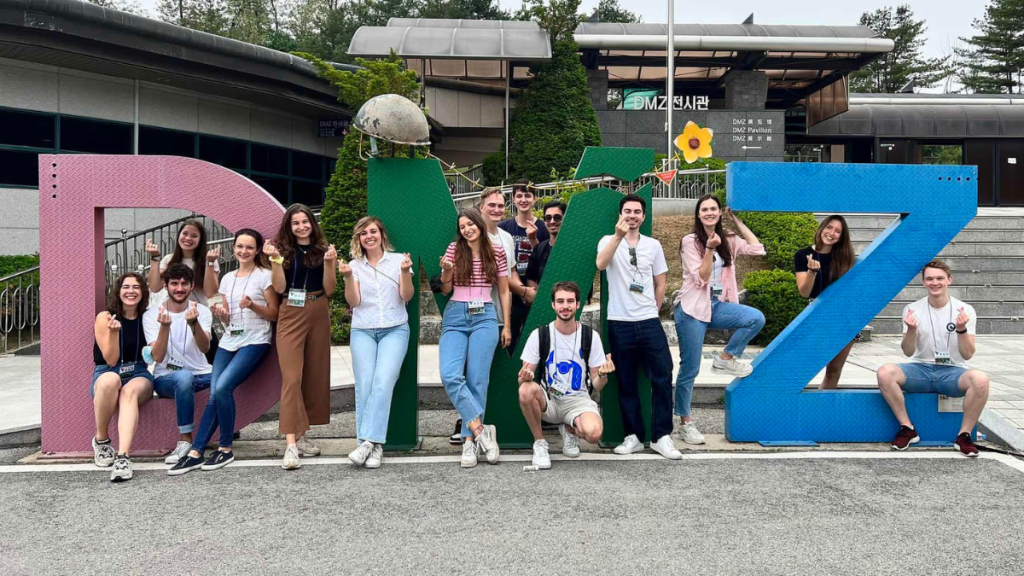The Korean Demilitarized Zone, or DMZ, is one of the most unique travel destinations in the world. Stretching 250 kilometers across the Korean Peninsula, the DMZ is a buffer between North and South Korea. Despite its name, it’s heavily guarded and loaded with historical significance. For travelers interested in history, politics, and culture, visiting the DMZ offers a rare glimpse into the realities of a divided nation. With the help of modern travel tools and an eSIM for Korea, exploring this sensitive area becomes safer, more informative, and more convenient—even on limited schedules.
Understanding the DMZ’s Historical Significance
The DMZ was created in 1953 as part of the armistice agreement that paused the Korean War. While the war never officially ended, this strip of land has served as the de facto border ever since. Within the DMZ lies the Joint Security Area (JSA), the most well-known part where North and South Korean soldiers face off at close range.
Visitors often feel a sense of tension and awe here, especially while standing near the blue meeting buildings where negotiations occasionally happen. With constant mobile access via the best eSIM for Korea, travelers can look up historical context, read news updates, or stream multimedia content that adds depth to their understanding of the region.
Popular Tour Options and What to Expect
Most travelers visit the DMZ through organised day tours departing from Seoul. These typically include stops at Imjingak Park, the Third Infiltration Tunnel, Dora Observatory, and Dorasan Station. More comprehensive tours might include the JSA, but access is sometimes restricted due to military activity or diplomatic events.
Tourists are usually accompanied by guides with strict itineraries and dress codes. Photography may be limited in certain areas. Mobile connectivity allows you to check regulations quickly, share your experience on the go, or use live translation apps if your guide speaks Korean.
Getting to the DMZ and Staying Connected
DMZ tours typically begin with early-morning pick-ups in Seoul. However, some independent travelers choose to visit nearby areas like Paju or Dorasan Station on their own using public transport. These areas are close to the border and provide access to observatories and museums, even without full DMZ tour access.
With the best eSIM for Korea, navigation becomes effortless. You can use apps like Naver Map or KakaoMap in English to plan your journey, track public transit routes, and receive live updates on delays or changes in access—especially important in such a politically sensitive region.
Cultural and Emotional Impact on Visitors
A visit to the DMZ is rarely just a sightseeing trip. Many tourists report feeling an emotional connection to Korea’s complex history and an appreciation for its people’s resilience. Exhibits about separated families, defectors, and peace initiatives leave a lasting impression, especially when viewed firsthand.
With an active internet connection, you can dive deeper into personal stories through blogs, podcasts, and documentaries. A reliable eSIM ensures that your curiosity doesn’t hit a wall when Wi-Fi is unavailable, especially in rural areas where some DMZ tour locations are based.
Eco-Tourism and Wildlife in the DMZ
Surprisingly, the DMZ has also become an unintended nature preserve. Because human activity is limited, the area supports rare species like the red-crowned crane and Amur leopard. Eco-tours are now gaining interest among nature lovers and photographers, offering a different perspective from the military-focused tours.
If you’re following an eco-tour route or hiking in nearby regions like Gamaksan or Mount Dorasan, a Korea eSIM helps with GPS tracking, weather updates, and emergency access. It also allows you to use wildlife-spotting apps or upload your sightings to citizen science databases.
Visitor Tips and Tour Guidelines
When visiting the DMZ, always carry your passport, wear modest clothing, and follow your guide’s instructions carefully. Military presence is strong, and rules can change without notice. Some areas may close temporarily, especially during diplomatic events.
A digital SIM for Korea allows you to check the latest advisories, message your tour provider for confirmation, or reschedule if needed.
How does the DMZ shape South Korea’s Tourism Identity?
The DMZ has evolved into a symbol of conflict and hope. As South Korea positions itself as a leader in tech, culture, and travel, the DMZ offers a contrasting narrative—a reminder of the past and a call for future unity. The site attracts millions of curious visitors yearly, contributing to the country’s cultural tourism appeal.
Mobile connectivity plays a role in shaping that narrative. From sharing insights on social media to accessing real-time translations and historic timelines, travelers with a Korea eSIM can enhance their understanding and share meaningful stories that stretch beyond the surface of a day tour.
Conclusion
The Korean DMZ isn’t just a line on a map—it’s a place where history, politics, emotion, and even nature converge. Whether you’re visiting to learn, reflect, or simply experience something unique, preparation and connectivity matter. With the best eSIM for Korea, travelers gain access to essential travel tools that improve safety, navigation, and knowledge along the way. It’s the easiest way to stay informed while exploring one of the world’s most complex and compelling borders.

